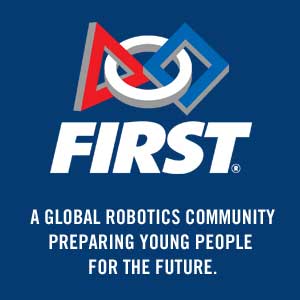Sponsored by Diane Wiscarson, Attorney, Wiscarson Law, P.C.
Each child learns differently, but some children have learning differences that require instruction tailored specifically to their individual needs. Learning differences come in all forms—from struggles with academics, such as reading and math, to social, emotional, or behavioral concerns. Public schools are subject to the Individuals with Disabilities Education Act, or IDEA, which governs individualized services that must be provided to eligible students, with their parents’ participation and collaboration.
What Is an IEP?
An Individualized Education Plan (IEP) is a custom-made educational plan for each public school student found eligible for special education services. Every IEP must be individualized to a particular child. Each IEP should be collaboratively developed by a child’s parents, educators, and specialists. This article reviews basic IEP requirements, highlighting often overlooked and under-discussed areas.
IEP contents are easy to explain but harder to put into practice. Each IEP part relies on the previous one, to form a cohesive educational plan. First, there must be current information about the child, including data and evaluations, that describes current needs and levels of functioning. Current levels of functioning provide baseline data for current needs addressed in the IEP.
Once needs and levels are identified, goals are set for each specific area. Goals determine the instruction and supports needed, which in turn help define an appropriate placement. Each part is vital, and without all, a child cannot properly be supported or instructed at school.
IEPs, Generally
Before implementing an IEP, you need enough child-specific information to actually write one. Parents know their child best, so they should expect to participate as experts when writing their child’s IEP. Start by collecting information about your child. The district will have some evaluations, as required by special education law. The district may also have data from previous IEPs. If professionals provide services to your child outside of school, ask them to write reports or attend meetings. Information should come from as many sources as possible, and the entire IEP team should carefully read and consider everything.
The IEP has services and supports needed for your child to benefit from their education. This means that if your child needs Specially Designed Instruction (SDI) for reading, writing, or math, it will be provided. It also means that social, emotional or behavioral issues at school will be addressed. Your child could receive services from a Speech-Language Pathologist (SLP), an Occupational Therapist (OT), a Physical Therapist (PT), a Psychologist, a Board Certified Behavior Analyst (BCBA), or other specialists as a part of their IEP.
Almost anything you can think of that a child needs to benefit from their education can be on the IEP and provided by the district—laptops, assistive technology, psychological services, and even training for parents. The key is “need.” The district has to provide what is necessary for your child to benefit from their education, not what is best, or even what would be beneficial or great.
An IEP should sufficiently describe your child, the educational needs, services, and supports to be provided in order to be completely portable. An IEP should be written so it can be implemented in any school, in any district, in any state. The IEP components are reviewed individually below, but the order in which they appear on the IEP varies among districts and states.
Individual Components of an IEP
Cover Page: When reviewing an IEP, start at the beginning with the cover page. Certain people are required to attend any IEP meeting. There must be a parent, a general education teacher, a special education teacher, and a district representative. The district representative must have knowledge and the authority to make decisions and commit resources on the district’s behalf. Others may be required, depending on specific circumstances. Make sure the required people attend the entire meeting and all are documented on the IEP cover page. It is possible to excuse certain people, but it must be done with the parent’s permission, before the meeting, and in writing.
Parents have the right to bring anyone to an IEP meeting who has knowledge of the child or their disability.
Parents also have the right to bring anyone to an IEP meeting who has knowledge of the child or their disability, including an attorney or advocate. Be sure to let the district know in advance. This is especially important when bringing an attorney, because the district will likely cancel the meeting if they are not told in advance.
Special Factors: Evaluate whether the student needs assistive technology (AT) devices or services, has communication needs, or has behaviors that impede learning. This includes behaviors that are disruptive, but do not need to be. The behaviors also include things like shutting down in class, hiding in the bathroom to avoid work or peers, or truancy. If the child has AT, communication, or behavior needs, those must be addressed elsewhere in the IEP.
Discuss whether the student is limited English proficient and whether native language assessments are needed. Finally, note whether the student is blind, visually impaired, deaf, or hard of hearing. The IEP must explain communication and language needs. There must be opportunities for the student to have direct interaction with peers and staff in the student’s communication mode.
Present Levels of Academic Achievement and Functional Performance: Present Levels are the IEP foundation, giving a clear picture of the student to any reader. Present Levels should identify strengths and needs as determined through all sources of information, whether from teachers, parents, the student, school evaluations, or private provider reports. All needs identified in the Present Levels must be addressed elsewhere in the IEP—whether in the goals, as accommodations, as related services, or somewhere else.
Student strengths should be concrete, not “Alex is a nice boy who is always smiling.” An informative strength would be, “Michael is very good at learning routines with explicit and repetitive instruction. Once he has learned a routine, he can independently complete each step in sequence.”
Parent concerns are any concern related to enhancing the education of the child. The IEP team must discuss and address each parent concern. Vague concerns like “the parents hope Zoe makes progress at school” do not help inform the IEP. A concrete statement such as “Kira’s parents are worried when there is a substitute teacher since Kira does not do well with new people and that unexpected change can trigger Kira’s anxiety.” This concern is something that can be addressed in a tangible way on an IEP.
The Present Level of Academic Performance should be current data or curriculum-based measurements and should include recent state or district-wide testing results. When a student need is identified, it is important to also have baseline data on a student’s current performance. That baseline data will guide writing IEP goals and objectives later in the IEP. A specific statement, like “Cassie’s reading comprehension level is at a 5.9 grade level, and she can read 90 correct words per minutes using sixth-grade materials,” provides clear information and baseline data.
The Present Level of Developmental and Functional Performance includes everything else, except academics, such as social skills, emotional concerns, behavior issues, and any potential related service area, such as communication, occupational therapy, etc. Every area of a child’s need should be here. There should be current information, which will serve as baseline data, for every area where there will be SDI or a related service provided. The need and rationale for supplementary aids/services, accommodations, and modifications should also be here. “McKenna has no idea how to be safe in the community” does not provide good information from which to design services and supports for a student. An appropriate statement would be, “Lyle will learn community safety skills, beginning with how to calmly state his name and telephone number, which he cannot do at all (baseline 0%).”
The Present Levels must also discuss how the student’s disability affects involvement and progress in the general education curriculum. Stating “Cassie’s health issues cause her to be absent frequently” does not provide specific or usable information. However, these two statements together provide the information needed to inform the IEP team: “Lindy has an intellectual disability and is unable to process and comprehend materials at the same rate and depth as her peers. As a result, the general education curriculum must be modified to her instructional level in order for her to participate in the general education class.”
Transition Services must be provided if the child will be 16 years old any time during the life of the IEP. There must be a statement of the student’s preferences, needs, interests, and results of any age-appropriate transition assessments. “Christine may attend community college, so she will take high school classes and hopefully get a diploma” is too general and gives no real information. “Bud was interviewed about his future plans using the TPI (Transition Planning Inventory). Results show that Bud needs to learn about employment, how to find a job, the skills required for different jobs, and how to keep a job once hired. Also, Bud did not know that job applications are usually required or that he could not set his own wage. The TPI further indicated that Bud planned to take public transportation to work but did not know how to take the bus or who to ask. Bud’s only stated interest was testing and designing video games, a job he thought was easy to find.” Although wordy, this is an informative transition section.
Be careful of the “does not qualify for this service” trap. Once a student is eligible for special education services under any disability category, all needs must be addressed. A student does not need to independently “qualify” for each type of service—such as occupational or speech language therapy.
Participation in Statewide/Districtwide Assessment: Be sure to ask what assessments will be given to your child during the life of the IEP. Look at each academic area separately, and document all accommodations necessary for the student, even if offered to every student. Know that if a student will later need extra time on a national test, like the ACT or SAT, the student must have a history of having that accommodation for testing. The IEP provides that documentation and history over the long term.
Measurable Annual Goals and Short-Term Objectives: Annual Goals (AGs) are just that—what is hoped to be achieved in a year’s time, with measurable criteria, in each specific area. Each goal should correspond to a need identified in the Present Levels. Each goal should also have baseline data in the Present Levels. Why is this important? Districts are required to regularly report a student’s progress to parents on IEP goals and objectives. It is virtually impossible to report whether a student is making progress if you do not know where the student’s skill was in a particular area before the special education services started.
Not all IEPs have Short-Term Objectives. However, if an IEP does have Short-Term Objectives for any of the Annual Goals, they must be linked together. The Short-Term Objectives are the building blocks to reaching the target Annual Goal. Every goal or objective requires two data points somewhere in the IEP. Baseline data is the starting data point for any goal or objective, usually in the Present Levels. The criteria for meeting a Measurable Annual Goal is the second data point.
Goals and objectives must be defined and measurable. State exactly how and when each will be measured. Anecdotal information is generally not enough, and it is important to see the word “data” somewhere in the measurement process. State who will do what, under what conditions, and to what degree, including the level of support that will be provided to the student when the goal is measured. “Elizabeth will improve her reading comprehension skills from a 5.3 grade level to a 6.5 grade level” provides baseline data about where the student is starting and the goal to try to reach.
Watch out for “roll-over” goals. These are goals that don’t change from one year to the next. If the child has not made progress and the same goal is still needed, something is wrong and there must be a change. If the same goal is still needed, then the student needs different instruction, more instruction, a different instructor, or something else. Leaving the same goals, with the same instruction, makes no sense.
Watch out for “roll-over” goals. These are goals that don’t change from one year to the next.
Make sure that the goal states how progress is reported to the parents. These are generally “check boxes” on the IEP, but they must state how the parents will be informed of progress (e.g., in writing), how often (e.g., monthly), and how the progress will be measured. Make sure that the progress is being measured by data, not just observations or anecdotal information, which are too subjective. Avoid vague and uninformative progress statements such as “Elizabeth is working on this goal, with slow progress.” An informative progress note might read, “Kevin’s reading comprehension has increased this term from a 4.5 to a 4.8 grade level.”
Specially Designed Instruction: SDI is the amount of instruction your child will receive in each area of need. For each AG on the IEP, there must be corresponding SDI on the Service Summary Page. Generally, the amount of SDI is the amount of time each goal or goal area will be worked on. This is an educated guess, but it must be individualized. For each area of SDI, there must be an amount of time the area of need will be worked on (daily, weekly, or monthly), by whom, and where the instruction will take place. A good example would be, “Reading Comprehension, 60 minutes each day, in the resource room, by a special education teacher.” This is explanatory and accurately informs a parent.
Students do not have to “qualify” for each individual service, as parents are sometimes told. There is a difference between the criteria for eligibility for special education services and the right to receive services. Once a child is eligible for special education services, all of the child’s needs at school must be met—no exceptions allowed.
Related Services: A Related Service is something necessary to allow a child to benefit from SDI. Related services frequently found on IEPs are speech-language, occupational therapy, psychological, transportation, and physical therapy. If the related service is intended to increase a child’s skills, then there must be a corresponding Annual Goal.
Transportation is a related service and should always be listed if it will be provided by the district. Whether “transportation” needs an Annual Goal depends on the purpose of providing transportation. If the related service is simply to transport the child to school, no Annual Goal is required. However, if transportation is being used as a method to entice a child to attend school and thus increase attendance, an Annual Goal would be required.
Accommodations and Modifications: This is probably the most misunderstood area of IEPs. Accommodations change the presentation, setting, timing of, and/or response to curriculum and/or instruction. They are designed to provide the student access to curriculum and instruction. Accommodations do not alter the assignment content level or evaluation of the student, and the student must still demonstrate mastery of core content.
Modifications change the level and/or content of the curriculum and generally result in modified grades. Modified grades sometimes result in a modified diploma, but this varies from state to state. Again, modification must be individualized to each child.
Is it an accommodation or a modification? Assume the math class is studying double-digit multiplication. The homework assigned is 50 double-digit multiplication problems. For Lidia, who processes information slowly but can do the work, an accommodation might be that Lidia only has to do 20 of the assigned homework problems. She would be demonstrating the same level of mastery with fewer problems. For Christine, who really struggles with math and is still learning basic multiplication, her homework might be to do 50 single-digit math problems. Christine has a modification because she is not doing the same level of work as the other peers in her class.
Supports for School Personnel: This section is often overlooked and rarely discussed, but it is very important. Staff supports needed to implement the IEP are listed here. If the child spends any time in a general education class, consultation between the general and special education teachers is needed. Talk about whether disability-specific training is needed for staff who will work with the child. Decide if child-specific training is needed for staff—particularly educational assistants. Related service providers who provide consultation to special and/or general education staff should also be documented.
Non-participation Justification: State clearly how much time the student will be removed from participating with regular education peers in the regular classroom and other non-academic activities. This should include clear reasoning for the child’s removal. Most important, the amount of time should not be based on the school schedule but on the child’s individual needs.
Extended School Year (ESY) Services: This is the most overlooked and ignored part of the IEP, as these are services that are provided by the district during the summer. A computer program for writing IEPs that automatically checks the ESY box as “no” is a red flag. ESY requires an actual IEP team discussion and should generally be a data-driven decision. If a child is to receive ESY services, the type and amount should also be individualized and listed separately on the IEP.
Placement: Generally, at least two placements must be considered, and any placement the parent(s) proposes must be discussed. Your child is entitled to placement with the most general education curriculum and the most time with general education peers that can be successful, with interventions and supports.
Summary: An IEP is your child’s educational service roadmap, and you are an expert driver. Collect all the information you can, then participate and collaborate on the IEP team to develop the most appropriate plan for your child!
Author Diane Wiscarson worked her way through the IEP system for her son and, in so doing, found her passion for helping other families navigate special education and the law. Since graduating from law school and founding Wiscarson Law almost 20 years ago, she has helped more than 2,500 Oregon and Washington families obtain appropriate services and placements from the region’s public school districts.










